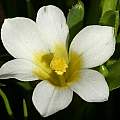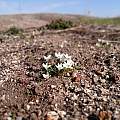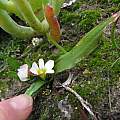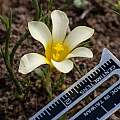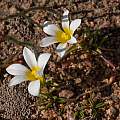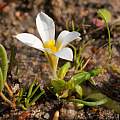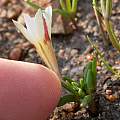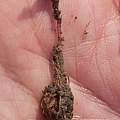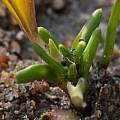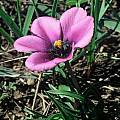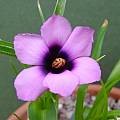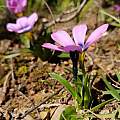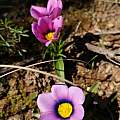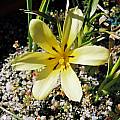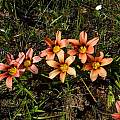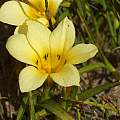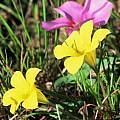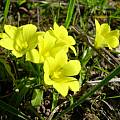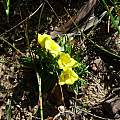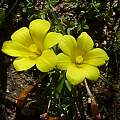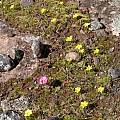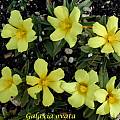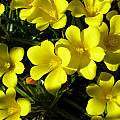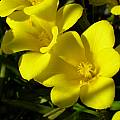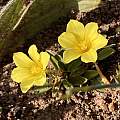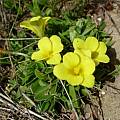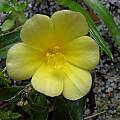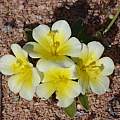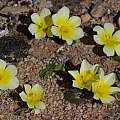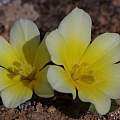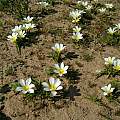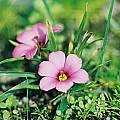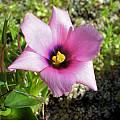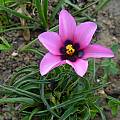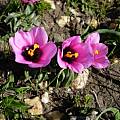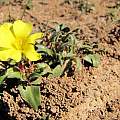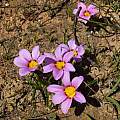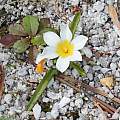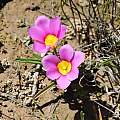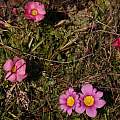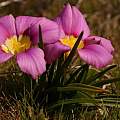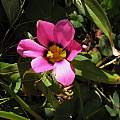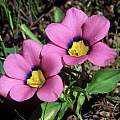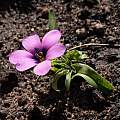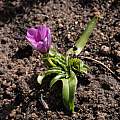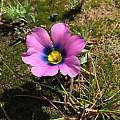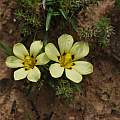The genus Moraea can be divided into five groups: Galaxia, Gynandriris, Hexaglottis, Homeria, and Moraea. Galaxia Thunb. has been sunk into Moraea. This former genus in the Iridaceae family is distributed from the Bredasdorp District of the western Cape to northern Namaqualand in the Northern Cape of South Africa. There are 16 species included in what is now labeled as section or group Galaxia. There are those who feel that it should have been kept as a separate genus since it looks so different from some of the other genera that are now included in Moraea. These are for the most part very short plants with solitary flowers. Species in this group are found on this wiki page. Information and pictures of the other groups can be found by clicking on these groups or the Moraea group pages listed below or found in the Moraea index where all species are listed alphabetically.
Moraea albiflora (G.J.Lewis) Goldblatt (syn. Galaxia albiflora G.J.Lewis) is found on sand or granite or limestone outcrops in the southern Cape, flowering May-August. It grows to 3 cm high and has white flowers with a yellow center. The first photo from Andrew Harvie. The next two photos from iNaturalist were taken by Henry de Lange and Jeremy Gilmore and shared under a CC BY-NC license
Moraea angulata Goldblatt (syn. Galaxia alata Goldblatt)is found on wet sandy flats in the southwestern Cape. It is a small plant, 2-4 cm high with yellow or white flowers in a basal tuft. Leaves are falcate and corms corky and vertically winged. It flowers July to August. Photos from iNaturalist taken in the Southwestern Cape by Carina Lochner and shared under a CC BY-NC license
Moraea barnardiella Goldblatt (syn. Galaxia barnardii Goldblatt) is found on clay flats and hills in the Southwestern Cape. It is a short plant with pink to purple flowers with a blackish center. The first two photos were taken by Rod Saunders and Audrey Cain. The next two photos from iNaturalist were taken in the Western Cape in August by Rupert Koopman and shared under a CC BY-NC license.
Moraea citrina (G.J.Lewis) Goldblatt (syn. Galaxia citrina G.J.Lewis) is a short stemless plant from the northwest Cape where it is found in shallow, sandy or stony soils. It blooms winter to spring and has yellow flowers in a basal tuft with the filaments united in a column. The first photo was taken by Alan Horstmann. The next two were taken September 2012 near Nieuwoudtville by Cameron McMaster and identified as this species by John Manning. The species is typically plain yellow, with a couple of populations on the Bokkeveld Mountains only noted as having dark markings. This is the first record of a color shift to orange. The last two photos from iNaturalist were taken by Felix Riegel in September in the Northern Cape and shared under a CC BY-NC license
Moraea fugacissima (L.f.) Goldblatt (syn. Galaxia fugacissima (L.f.) Druce) is found on wet sand and clay flats from Namaqualand to Humansdorp. It has short-lived fragrant yellow flowers with fringed style lobes and filaments united in a column. Leaves are linear to terete and more or less erect. When grown in captivity, a potful of M. fugacissima will often burst into bloom the day after watering, but check them in the morning as the flowers will be gone by afternoon. Photos by Rod Saunders and Cameron McMaster. The last is a habitat shot.
Moraea galaxia (L.f.) Goldblatt & J.C.Manning (syn. Galaxia ovata Thunb.) is a short plant with yellow flowers in a basal tuft growing on flats and plateaus, mainly on sandstone soils in the winter rainfall areas of South Africa. It has ovate prostrate leaves. Bloom time can be from winter to early spring. Photographed by Bill Dijk, Alan Horstmann, Carina Lochner and Cameron McMaster.
Moraea luteoalba (Goldblatt) Goldblatt (syn. Galaxia luteoalba Goldblatt) is a short stemless plant with yellow flowers fading to white at the edges arranged in a basal tuft. It has ovate prostrate leaves with hairy margins. It is found in sandstone outcrops in the Northwestern Cape and flowers winter to spring. The first photo by Alan Horstmann. The rest of the photos from iNaturalist were taken by Craig Peter in the Gifberg the end of August and Nick Helme in September in the Bokkeveld Plateau and shared under a CC BY-NC license.
Moraea melanops Goldblatt & J.C.Manning was recognized as a new species in 2000. It resembles Moraea versicolor but is distinguished by its purple to lilac perianth with a dark purple-black center and stamens that are partly to entirely free. It has tepals that spread and do not form a floral cup. The first two photos were taken by Alan Horstmann and the last two by Cameron McMaster. The latter were taken in the Overberg.
Moraea pilifolia Goldblatt (syn. Galaxia ciliata Pers.) grows on stony slopes from Namaqualand to Gifberg and flowers June-July. It is a short plant, to 4 cm high with yellow flowers in a basal tuft. Photo from iNaturalist taken by Nick Helme in July in Namaqualand where it was growing in granite renosterveld and shared under a CC BY-NC license.
Moraea variabilis (G.J.Lewis) Goldblatt (syn. Galaxia variabilis G.J.Lewis) is a rare species distributed in the Northwest Cape where it grows in mostly clay soils at 400 to 1000 m. Growing from 1.5-3.5 cm, it has channeled mostly prostrate leaves, and pink to mauve flowers with yellow centers. The filaments are united in a column. It flowers in spring (September to October). The first photo from Rachel Saunders. The next two photos from iNaturalist were taken by Margaret Fox in the Western Cape in September and the last two from Nick Helme taken in September in the Western Cape and shared under a CC BY-NC license.
Moraea versicolor (Salisb. ex Klatt) Goldblatt (syn. Galaxia purpurea (Ker Gawl.) Klatt) is a short plant with pink flowers with a yellow center. It grows on clay and granite flats and slopes in the southwestern Cape and blooms late winter-early spring. The first photo taken September 2003 in South Africa by Bob Rutemoeller is of a plant grown by Rod Saunders and Rachel Saunders. The second photo is from Rachel Saunders. The rest of the photos from iNaturalist were taken in August and September in the Southwestern Cape by Carina Lochner and shared under a CC BY-NC license.
Moraea vuvuzela Goldblatt & J.C.Manning is a species known from two locations between Rawsonville and Villiersdorp near Worcester. It is threatened by agriculture and development. It has cream-colored flowers, dark nectar guides, and a yellow throat. The species was named after the South African air horns brought to the world's attention by their indiscriminate use during the 2010 FIFA World Cup tournament. Pictures and more information can be found here. Photo from iNaturalist taken by Charles Stirton in the Southwestern Cape in August and shared under a CC BY-NC license.
Gynandriris - Hexaglottis - Homeria a-j - Homeria k-z - Moraea group a - Moraea group b - Moraea group c-e - Moraea group f - Moraea group g-i - Moraea group j-m - Moraea group n-r - Moraea group s - Moraea group t - Moraea group u-v - Moraea hybrids - Moraea index
